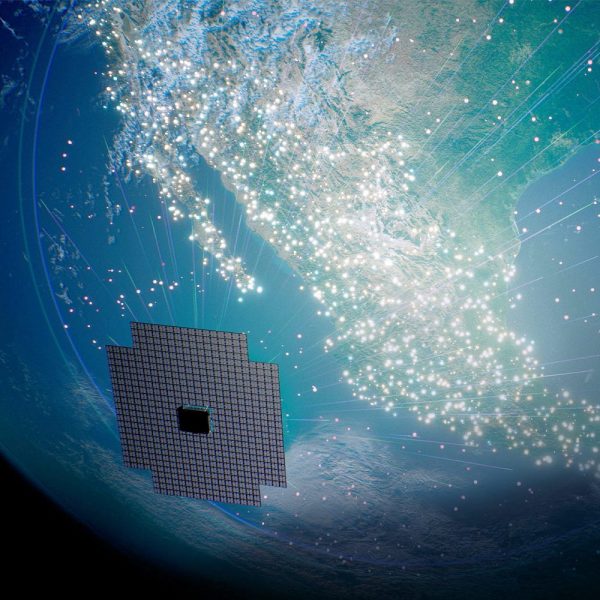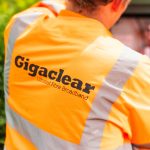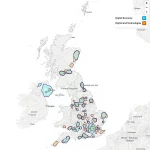Vodafone Backed AST Space Mobile Begin Testing 4G and 5G Satellite

AST SpaceMobile, which is backed by Vodafone and various other global mobile operators, has successfully completed the deployment of a huge 693-square-foot (64.4-square-meter) phased array antenna on their prototype BlueWalker 3 LEO satellite. The platform will be used to test a new space-based 4G and 5G cellular broadband network.
Over the past few months we’ve seen various space companies, such as Starlink (here) and OneWeb (here), move to harness their new ultrafast broadband satellites in Low Earth Orbit (LEO) to deliver affordable 4G (LTE) and 5G mobile services – using common standards – over a wide area (global roaming), often even without consumers even needing to buy a new handset.
The idea itself is nothing new. For example, the EU funded and BT supported Satellite and Terrestrial Network for 5G (SaT5G) project (here) has already made it possible to develop solutions that can integrate a standard commercially available 5G core network into a live satellite network. But seeing such ideas being turned into reality is always exciting to watch.
Advertisement
The latest company to join this club is Texas-based AST SpaceMobile, which back in 2020 received a funding injection of $25m (£19.5m) from Vodafone to help it develop a space-based mobile network (here). At the time, AST SM had just launched their first experimental BlueWalker 1 satellite, which was a tiny CubeSat (about the size of a bread tin) that was used to test some of their experimental ideas.
Fast-forward to today and AST SM has now completed the deployment of their latest and most significant BlueWalker 3 satellite, which orbits at an altitude of a little over 500km (LEO) and is a near final prototype for the even larger operational BlueBird satellites.
The signature feature of the 1.5 ton BW3 satellite is a huge 693-square-foot (64.4-square-meter) phased array antenna, which can directly communicate with mobile phones on the ground. This is the largest-ever commercial communications array in Low Earth Orbit. The satellite is expected to have a Field of View (FoV) of over 300,000 square miles on the surface of the Earth.
Abel Avellan, Chairman and CEO of AST SpaceMobile, said:
“Every person should have the right to access cellular broadband, regardless of where they live or work. Our goal is to close the connectivity gaps that negatively impact billions of lives around the world. The successful unfolding of BlueWalker 3 is a major step forward for our patented space-based cellular broadband technology and paves the way for the ongoing production of our BlueBird satellites.”
Assuming the testing goes well, then we can expect AST SM to start launching a full constellation of 100 BlueBird satellites by the end of 2024. The first five of these will be similar to BW3, while the rest will be even larger. The company already has a mutual exclusivity agreement with Vodafone in 24 countries, as well as various agreements and understandings with other mobile network operators across the world.
Advertisement
However, questions remain over the likely cost and performance of such services, although the aim is to make them attractive for regular consumers (we suspect this may form part of a ‘global roaming’ style add-on for your plan, at extra cost). Further challenges may also come from the need to deploy ground stations and to secure regulatory approval for related radio spectrum across multiple countries. No mean feat.
On top of that, the new satellite has already attracted some concern from astronomers and those involved in other space-focused observational sciences, which warn that platforms with such a large antenna array can pollute the data they’re trying to collect – BW3 is already said to outshine even Venus in the night sky. Not to mention the rising risk from “space junk” and collisions in orbit. But so far regulators have not taken any firm action on these issues.
https://twitter.com/AbelAvellan/status/1592123932026413056?s=20&t=pSoYPbvU_WI0hLEFaxHqbQ
Mark is a professional technology writer, IT consultant and computer engineer from Dorset (England), he also founded ISPreview in 1999 and enjoys analysing the latest telecoms and broadband developments. Find me on X (Twitter), Mastodon, Facebook, BlueSky, Threads.net and Linkedin.
« Rural UK ISP Truespeed Introduce Jacob Rees-Mogg to Full Fibre






















































Amazing work, looking forward to when this is useable for all.
Many thought GSM meant mobiles used satellites for transmission , won’t be long before phones will actually use satellites instead of local masts.
Now to await those moaning about not getting a signal currently and why vf shouldn’t be spending money on this.
I tried putting up my own satellite but the milk bottle fell over and it went straight into the garage and set fire to the toilet paper and petrol that I’ve been hoarding
Sorry to hear that Nick. The trick is to use at least 5x 2L plastic bottles (which fizzy drinks come in) duct taped together in a cross pattern.
I have found such a setup optimal for launching a cluster of 20 micro-satellites.
Hope this helps
This is one way for the telco’s to beat paying the greedy cellsite mast landlords 😀
Similar to Starlink, will these Low-Earth-Orbit satellites will only stay in orbit for 5yrs as they will deplete their onboard fuel required to maintain correct orbital positions?
‘Regulators’ here on Earth cannot even prevent a trillion gallons of raw untreated sewage being pumped while nobody is looking into our seas and rivers where people swim, so to think they can issue legislation to control ‘Space’ is absolutely ludicrous beyond belief.
It’s not really a replacement for land masts. There’s not enough bandwidth.
Apple’s solution only supports text and with SpaceX/Starlink each satellite will provide 2-4Mbps… 4Mbps to be shared by everyone connected to that satellite.
The antenna used by these satellites are 2x larger than the ones SpaceX will use, so I assume bandwidth is higher, but don’t expect miracles.
So perfect for o2 users then!